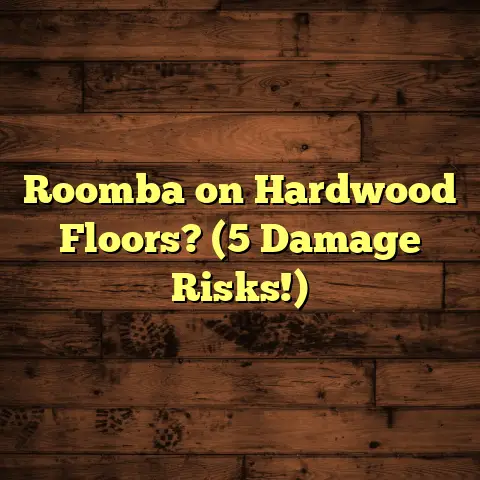Cat Scratching Floor? Know This! (Now or Later)
Ever walk into a room and cringe at the sight of those telltale scratches on your beautiful floor?
Yeah, me too. As a flooring contractor, I’ve seen it all – from minor blemishes to full-blown feline-induced destruction.
But don’t despair! Understanding why cats scratch and how seasonal changes play a role is the first step to reclaiming your floors.
Let’s dive in and get those floors looking purr-fect again!
Understanding Cat Scratching Behavior
The Natural Instincts
Why do cats scratch? It’s not just to annoy us, I promise!
Scratching is deeply ingrained in their DNA. Think of it as a multi-purpose tool:
- Territory marking: Cats have scent glands in their paws. Scratching leaves behind a visual mark and a scent. It’s like their calling card: “I was here!”
- Stretching: Ever watched a cat wake up? The first thing they do is stretch and dig their claws in. It’s a fantastic way to exercise those muscles.
- Claw maintenance: Scratching helps remove the dead outer layer of their claws, keeping them sharp and healthy.
It’s important to remember that scratching isn’t just a habit; it’s a need. And when that need isn’t met appropriately, your floors pay the price.
Seasonal Influences
Believe it or not, the seasons can amp up your cat’s scratching behavior.
- Spring: Think of spring as kitty’s “re-energized” season. Longer days and warmer weather boost their energy. More energy often translates to more scratching.
- Summer: Summer storms can trigger anxiety in some cats. The loud thunder and lightning can send them scrambling for comfort. Sadly, sometimes that means scratching the nearest vertical surface (your floor).
- Fall: As the weather cools down and the days get shorter, cats may spend more time indoors. This change in routine can sometimes lead to increased scratching out of boredom or frustration.
- Winter: Just like us, cats seek warmth and comfort during the colder months. They might be more inclined to scratch near heat sources or in cozy spots.
Also, the holidays bring changes.
New furniture arrangements, guests, or even a new scratching post gifted by a well-meaning relative can disrupt their routine and influence where they choose to scratch.
Understanding these seasonal triggers is key to anticipating and managing your cat’s scratching behavior.
Types of Flooring and Their Vulnerabilities
Let’s talk about the battlefield – your floors! Each type has its own strengths and weaknesses when it comes to feline claws.
Hardwood Floors
Ah, hardwood. Beautiful, classic, and… easily scratched.
Those gorgeous planks are particularly vulnerable. Why? Because the finish is often the first line of defense.
Some finishes, like polyurethane, offer decent protection. But even the toughest finishes can’t withstand repeated scratching.
Here’s the kicker: Darker stains tend to show scratches more readily than lighter ones. Also, softer woods like pine are more susceptible to damage than harder woods like oak or maple.
Industry Insight: I’ve seen homeowners try to “buff out” scratches, but it often makes things worse. The finish is delicate, and aggressive buffing can remove it entirely.
Laminate and Vinyl
Laminate and vinyl are often touted as pet-friendly options. And in some ways, they are.
They’re generally more scratch-resistant than hardwood, thanks to their durable wear layers. But “scratch-resistant” doesn’t mean “scratch-proof.”
Durability Ratings: Look for products with a high AC (Abrasion Class) rating. AC3 or AC4 are good choices for homes with pets. The higher the number, the more resistant the flooring is to wear and tear.
The Catch: While the surface might hold up well, sharp claws can sometimes catch on the seams between planks or tiles, leading to chipping or lifting. Also, some cheaper laminates have a thin wear layer that can be easily penetrated.
Carpet
Carpet: A cat’s scratching paradise… or a homeowner’s nightmare? It’s a bit of both, really.
On the one hand, carpet provides a tempting scratching surface. On the other hand, it can be surprisingly resilient.
Fiber Matters: * Nylon: Known for its durability and resistance to wear and tear. * Olefin: Stain-resistant but can be prone to matting and crushing. * Polyester: Soft and affordable but not as durable as nylon.
The Problem: Cats can get their claws stuck in the loops of some carpets, leading to pulled threads and unsightly snags. Also, the backing of the carpet can be damaged by persistent scratching.
Pro Tip: Consider a low-pile carpet with a tight weave. This will make it harder for claws to penetrate and cause damage.
Tile and Stone
Tile and stone are generally the most scratch-resistant flooring options. But even these tough materials aren’t completely immune to damage.
The Good News: It’s tough for a cat to scratch the surface of ceramic, porcelain, or stone.
The Bad News: Claws can potentially chip or crack the surface, especially if the flooring is already weakened. Also, grout lines can be a target for scratching, leading to crumbling and discoloration.
Important Note: Sealing your grout lines can help protect them from damage and make them easier to clean.
Assessing the Damage
Okay, time for a damage assessment. Grab your magnifying glass (optional) and let’s get to work.
Identifying Scratching Patterns
- Location: Where does your cat scratch most often? Near doorways, windows, or furniture? This can give you clues about their motivations.
- Type of Scratches: Are they shallow surface scratches or deep gouges? This will help you determine the severity of the damage.
- Wear Patterns: Are there areas where the finish is worn away or the carpet is frayed? This indicates repeated scratching in the same spot.
Checklist for Identifying Damage:
- [ ] Surface scratches
- [ ] Deep gouges
- [ ] Worn finish
- [ ] Pulled carpet threads
- [ ] Chipped or cracked tiles
- [ ] Damaged grout lines
Understanding Repair Options
Now that you’ve identified the damage, what can you do about it?
Hardwood Floors:
- Minor Scratches: Try a touch-up kit or a wood stain marker. Follow the manufacturer’s instructions carefully.
- Deeper Scratches: You may need to sand down the affected area and refinish it. This is best left to a professional.
- Severe Damage: Replacing the damaged planks may be necessary.
Laminate and Vinyl:
- Minor Scratches: Use a laminate or vinyl repair kit. These kits typically include a filler that you can use to conceal the scratches.
- Major Damage: Replacing the damaged planks or tiles is usually the best option.
Carpet:
- Pulled Threads: Carefully trim the loose threads with scissors. Avoid pulling them, as this can cause further damage.
- Stains: Clean the affected area with a pet-safe carpet cleaner.
- Severe Damage: You may need to replace the damaged section of carpet.
Tile and Stone:
- Chipped Tiles: Use a tile repair kit to fill in the chips.
- Cracked Tiles: Replace the damaged tiles.
- Damaged Grout: Remove the old grout and replace it with new grout.
DIY vs. Professional Repairs:
- DIY: Suitable for minor scratches and cosmetic repairs. Can save you money but requires time and effort.
- Professional: Recommended for major damage and complex repairs. Ensures a high-quality and long-lasting result.
Cost Considerations: DIY repairs are generally cheaper than professional repairs. However, the cost of professional repairs can vary depending on the extent of the damage and the type of flooring.
Example: According to HomeAdvisor, the average cost to repair hardwood floors ranges from \$200 to \$700. Replacing tile can cost between \$5 and \$15 per square foot.
Prevention Strategies
An ounce of prevention is worth a pound of cure, right? Here’s how to protect your floors from future feline assaults.
Providing Alternatives
The key to preventing scratching is to give your cat appropriate outlets for their natural behavior.
- Scratching Posts: Offer a variety of scratching posts in different materials (sisal, cardboard, carpet) and orientations (vertical, horizontal, angled). Place them in areas where your cat likes to scratch.
- Scratching Pads: These are great for cats who prefer to scratch horizontally. Place them on the floor near your cat’s favorite scratching spots.
- Cat Trees: Cat trees provide multiple scratching surfaces and climbing opportunities. They’re a great way to keep your cat entertained and engaged.
Material Matters: Cats have preferences! Some love sisal, others prefer cardboard, and some are carpet fanatics. Experiment to see what your cat likes best.
Placement is Key: Don’t hide the scratching post in a corner. Put it where your cat naturally wants to scratch – near their sleeping area or in a high-traffic zone.
Using Deterrents
Sometimes, you need to send a clear message: “Scratching here is NOT okay!”
- Double-Sided Tape: Cats hate the sticky feeling on their paws. Apply double-sided tape to areas where your cat likes to scratch.
- Citrus Sprays: Cats generally dislike the smell of citrus. Spray a citrus-scented deterrent on your floors. Make sure it’s pet-safe!
- Commercial Scratch Deterrents: There are many products available that are designed to discourage scratching. Look for ones that contain natural ingredients and are safe for cats and floors.
Important: Never use harsh chemicals or abrasive cleaners, as these can damage your floors and harm your cat.
Training Techniques
Training your cat to use a scratching post takes patience and consistency.
- Positive Reinforcement: Reward your cat with treats or praise when they use the scratching post.
- Redirecting Behavior: If you catch your cat scratching the floor, gently redirect them to the scratching post.
- Making the Scratching Post Appealing: Rub catnip on the scratching post to make it more attractive. You can also dangle a toy near the post to encourage your cat to use it.
Consistency is Crucial: Be consistent with your training efforts. It may take time for your cat to learn, but with patience and persistence, you can change their behavior.
Seasonal Maintenance for Floors
Just like your wardrobe, your floors need seasonal attention.
Cleaning and Care
- Spring: Give your floors a deep cleaning to remove accumulated dirt and grime. This is also a good time to inspect for any damage and make necessary repairs.
- Summer: Protect your floors from excessive moisture and humidity. Use dehumidifiers if necessary and clean up spills promptly.
- Fall: Prepare your floors for the colder months by applying a fresh coat of wax or sealant. This will help protect them from moisture and wear and tear.
- Winter: Be careful with salt and de-icing chemicals, as these can damage your floors. Use mats and rugs to protect your floors from these substances.
Pet-Safe Cleaning Products: Always use cleaning products that are safe for pets. Many conventional cleaners contain harsh chemicals that can be harmful to cats. Look for natural or enzymatic cleaners that are specifically designed for pet owners.
Protective Measures
- Area Rugs: Area rugs can protect your floors from scratches, spills, and wear and tear. Choose rugs that are durable and easy to clean.
- Floor Protectors: Use floor protectors under furniture legs to prevent scratches and dents.
- Specialized Coatings: Consider applying a specialized coating to your floors to protect them from scratches and stains. There are many products available that are designed for this purpose.
When to Seek Professional Help
Sometimes, the damage is too severe for a DIY fix. Here’s when it’s time to call in the pros.
Assessing Severity
- Extensive Damage: If your floors are covered in scratches, gouges, or stains, it may be time to seek professional help.
- Structural Damage: If your floors are cracked, warped, or damaged to the point where they pose a safety hazard, it’s essential to get them repaired or replaced by a professional.
- DIY Attempts Failed: If you’ve tried to repair the damage yourself but haven’t been successful, it’s best to call in a professional.
Professional Services
- Flooring Contractors: These professionals can repair or replace damaged flooring. They can also provide advice on the best flooring options for your home and lifestyle.
- Carpet Cleaners: These professionals can clean and repair carpets, removing stains and restoring their appearance.
- Tile and Grout Specialists: These professionals can repair or replace damaged tiles and grout.
Choosing the Right Service: Consider the extent of the damage, the type of flooring, and your budget. Get quotes from multiple professionals and compare their prices and services. Ask for references and check online reviews to ensure that you’re hiring a reputable and qualified professional.
Conclusion: Moving Forward with Knowledge
So, there you have it! Everything you need to know about cat scratching and your floors.
Remember, understanding your cat’s behavior, providing appropriate scratching outlets, and taking proactive steps to protect your floors are key to maintaining a happy home for both you and your feline friend.
Don’t let those scratches get you down. With the right knowledge and tools, you can keep your floors looking beautiful for years to come.
Now go forth and conquer those cat scratches! Your floors (and your sanity) will thank you.





